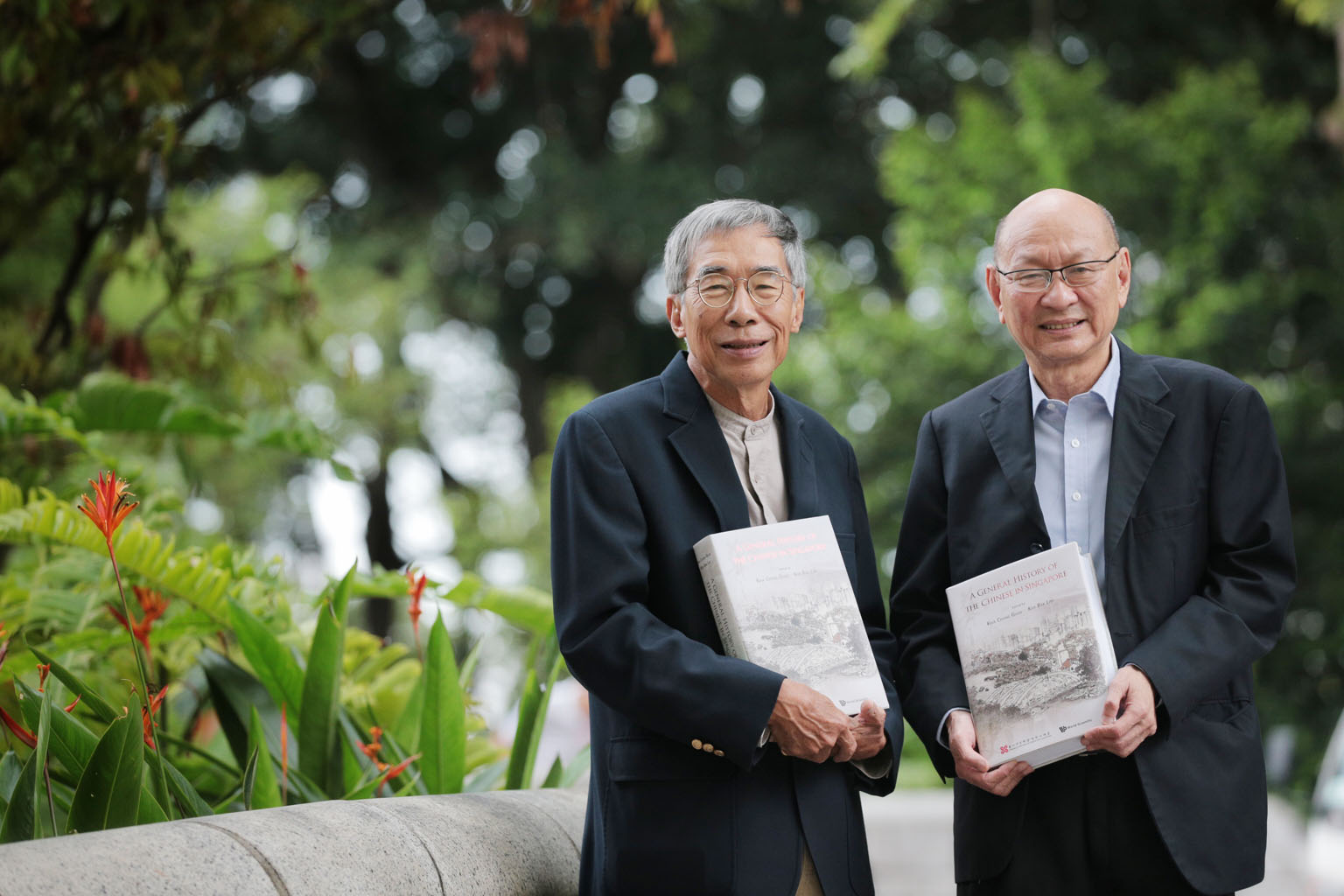Shedding light on history of Chinese here
English edition of book covers various topics, starting with community's presence pre-1819
Sign up now: Get ST's newsletters delivered to your inbox

Historians Kwa Chong Guan (left) and Kua Bak Lim with copies of the newly launched English edition of A General History Of The Chinese in Singapore, of which they are co-editors.
ST PHOTO: JASON QUAH
Melody Zaccheus
Follow topic:
Eagle-eyed visitors to older temples and burial sites around Singapore and Malaysia may have noticed the Chinese characters "long fei" on memorial tablets and gravestones.
They mean "dragon flies away" - a term representing the refusal of triad members to recognise the Qing court in China.
They are also a little-known physical marker of the triads' early presence in these parts in the early 19th century, according to Singapore Chinese historian Kua Bak Lim.
Mr Kua, who is the co-editor of A General History Of The Chinese In Singapore, said that after fleeing China, the triads - who were anti-Manchurian activists - brought their expertise in people management to Singapore, where they established societies that offered lodging and jobs to Chinese coolies and the like.
The history of Singapore's early Chinese secret societies is captured in the English edition of the book, which was launched by Social and Family Development Minister and Second Minister for National Development Desmond Lee at Fort Canning Centre yesterday.
This follows the publication of the Chinese edition in 2015.
The Singapore Federation of Chinese Clan Associations, which spearheaded the project, said the latest edition is published to commemorate Singapore's bicentennial and is aimed at reaching a wider audience.
The book comprises 18 chapters and 38 essays, and involved a total of 26 authors and seven translators. It covers a variety of topics, starting with the Chinese presence in pre-1819 Singapore.
For instance, it notes that a community of Teochew agriculturalists was already cultivating gambier in Singapore before Sir Stamford Raffles' arrival in 1819.
In addition, it notes that Chinese merchant Wang Dayuan recorded that the island was already trading with China in the 14th century.
In the second half of the 16th century, Singapore served as the "gateway port" to the royal capitals and trading centres of the Johor sultans up the Johor River.
The Strait of Singapore was thus a "major junction" in the sailing routes of Hokkien merchants in the South China Sea.
-
26
Number of authors involved in this book of 18 chapters and 38 essays
The book's co-editor, Singapore historian Kwa Chong Guan, said the English edition of the book aims to widen understanding of the beginnings of the Chinese community in Singapore.
He said: "The historical development of the Chinese as a community in Singapore was not in response to British colonialism but because of wider economic, social and political changes in the region, leading to the development of a Chinese community that is networked with other Chinese communities in the region."
The book is supported by the Singapore Bicentennial and the National Heritage Board.
It is priced at $98 for the hardcover version and $68 for the paperback version before goods and services tax.

